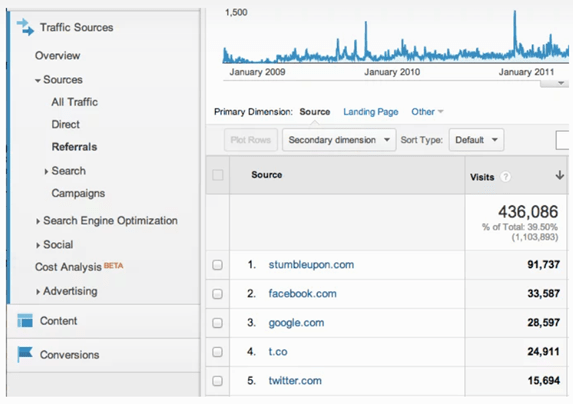What Are Thumbnails?

Hand off the toughest tasks in SEO, PPC, and content without compromising quality
Explore ServicesWhether we buy a product or return it to the shelf, is frequently determined by the image on the packaging, which affects us – even if “only” on our subconscious. The first impression we get from the product preview influences our decision to buy or not to buy.
Like a packaging image that encourages people to buy, a thumbnail on the internet is responsible for the first impression of web content such as pictures and videos. A well-designed thumbnail image piques the viewer’s interest and encourages them to click. A thumbnail, however, is capable of much more.
This article will look at what thumbnails are, why thumbnails are important, how to name photos for SEO, and why image SEO is important.
Grab your best mug of coffee and follow through…
What Are Thumbnails?
A thumbnail (or “thumb”) is a compressed preview image of the original that serves as a placeholder. A thumbnail image serves as a small image that represents a larger one. A thumbnail image should have a specific size depending on the platform, though there is no real definition of thumbnail size.
Still images gave rise to the term “thumbnail.” A thumbnail was a smaller version of a full digital image that could be easily viewed while browsing through a large collection of images.
Thumbnails are used by your computer’s operating system as well.
According to Google recommendations, an impressive thumbnail should be at 1280 pixels by 720 pixels and 640 pixels (1280 × 720 resolution) as its minimum width. Additionally, a 16.9 aspect ratio is better in YouTube players and previews. Meanwhile, in Pinterest, the image width is fixed at 236 pixels.
The larger the viewer’s screen, the more images are displayed next to each other. Notably, Amazon employs a variety of thumbnail sizes for various applications. On the start page, thumbnails with a height of 200 pixels and a dynamic width are used. The preview images on category pages are 150 pixels wide by 150 pixels tall.
Below is an example of video marketing thumbnails with the video’s title for lasagna recipes in Google search.

Why Are Thumbnails Important?
The most significant advantage of thumbnail images is their smaller file size when compared to the original image. As a result, they load more quickly and use less bandwidth. If a website’s image and video content is initially displayed as thumbnails, loading times will be significantly reduced. According to HTTP Archive, images make up on average 21% of a total webpage’s weight.
Because thumbnails have a small file size, website designers can provide visitors with a lot of content right away without increasing the page’s loading time. Approximately 40% of people abandon a website that takes more than three seconds to load.
When you click on the thumbnail, you will be taken to the media content in its original size, which can be opened in a new tab or window. Other benefits include:
Saves on space: Preview images allow internet users to present an overview of various media content in a small space.
User-friendliness: Images have the advantage of being very quick to capture; thumbs structure a website so that users can quickly find their way around it.
Interactivity: Thumbnails engage the user with the website – typically by clicking on a thumbnail.
Thumbnails are typically generated automatically by search engines, image editing software, and image management software. A thumbnail’s smaller file size is especially useful for mobile browsing.
Thumbnails FAQ
What is the purpose of thumbnails?
Thumbnails are critical for making your content more accessible, appealing, and engaging to users, and serve a great purpose when it comes to on-page SEO.
For starters, they provide important contextual information to search engines.
Secondly, optimized images increase page loading speed, which boosts user engagement and search engine rankings in the results pages.
It also involves accurately labeling images so search engine crawlers can read them and understand page context.
Thumbnails serve as placeholders for larger images. Improved user experience and interactions with your site boost search engine rankings, which in turn increases customer engagement, conversions, and retention.
Furthermore, because optimized images take up less storage space on your server, site backups will be completed faster.
What is a thumbnail in Google?
In its image search, Google employs thumbnails rather than full-size images. This means that users are exposed to a range of different images at the same time. By clicking on one of the thumbnail images, the user can request more information and, if necessary, be directed directly to the source website.
What is image SEO?
Image SEO is the process of optimizing graphics on a website to make it more appealing to search engine crawlers. Image SEO gives search engines more information about a graphic, which helps them understand the content and can lead to a boost in search rankings and visibility. It may also result in an image appearing in Google’s image search.
How do I name my photos for SEO?
Below is a step-by-step process on how to name your photos for SEO, you can also find on YouTube videos and tutorials on how to make a custom thumbnail.
Use unique images
Stock photos are acceptable, but they will not necessarily help your search rankings because other websites frequently use the same images. In the same way that unique written content is better for SEO, uploading unique images whenever possible is a good idea.
Resize your images
Image size refers to the dimensions of an image (e.g. 1024 by 680 pixels). Whereas the file size is the amount of space needed to store it on the server (e.g. 350 kilobytes).
You will need to scale down the file size without losing too much quality for them to work well on the web. In addition to picking image formats with the correct file format: .PNG, .JPG, .BMP or .GIF.
Ideally, you should try different file types and compression rates to see what works best for each image. Many image-editing software programs like Canva can be of great help. For instance, Adobe Photoshop has a “save for web” option that automatically reduces file size while optimizing image quality.
For people with less knowledge of using graphic design tools and software like Adobe Photoshop, Canva is a free tool with a pre-set of Thumbnails, such as YouTube thumbnail format and dozens of thumbnail templates you can use right away for a YouTube channel.
Optimize image file names
Choosing the appropriate file name is critical for your page’s SEO and ranking in image search results. To maximize SEO power, name any image file before uploading it with relevant, descriptive keywords.
Use alt tags
Viewers may understand what a picture is about, but search engine crawlers require additional information. Without alternative text, search engines cannot accurately index your image content. A good alt tag provides context while also assisting visually impaired users.
Why is image SEO important?
Images that are well-designed and optimized for search engines are extremely valuable.
Pictures not only command more attention than plain text, but they have also become a driving force for website traffic. For example, the still image of your custom video thumbnail should be highly optimized so that when people embed your YouTube video on their site or social media pages, your thumbnail can serve as a billboard for your business.
The number of organic visitors generated by image clicks is increasing. These image clicks are mostly coming from Google Images. When a user clicks on one image, Google’s indexing suggests other potentially related images. Gaining exposure in this manner via indirect search is a significant driver of web traffic.
If a web page’s images are not optimized for search engine discovery and indexing, it may lose a large number of users.
Are You Making Use of Thumbnails?
Hopefully, this article has given you a better understanding of thumbnails.
Image optimization is becoming increasingly important as Google’s search becomes more visual.
Image thumbnails in organic search results influence click-through rates, build anticipation, and may change the user’s perception of what the target URL is about.
Loganix has given you everything you need to give your content the boost it requires to reach your ideal target audience. Using the tips and tools we’ve discussed, you can create thumbnails that draw attention, elicit emotion, pique the target audience’s interest, and keep them wanting more.
Most importantly, we can help you do all of this regardless of which device you use.
Hand off the toughest tasks in SEO, PPC, and content without compromising quality
Explore ServicesWritten by Jake Sheridan on August 4, 2021
Founder of Sheets for Marketers, I nerd out on automating parts of my work using Google Sheets. At Loganix I build products, and content marketing. There’s nothing like a well deserved drink after a busy day spreadsheeting.





